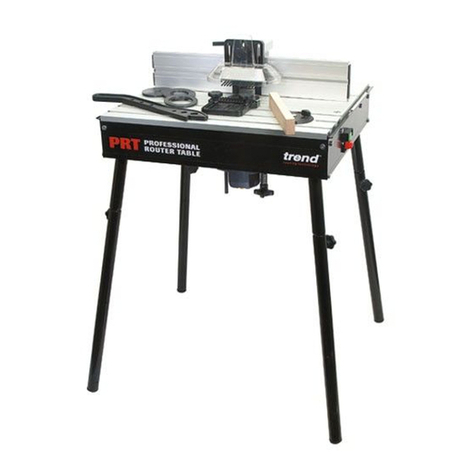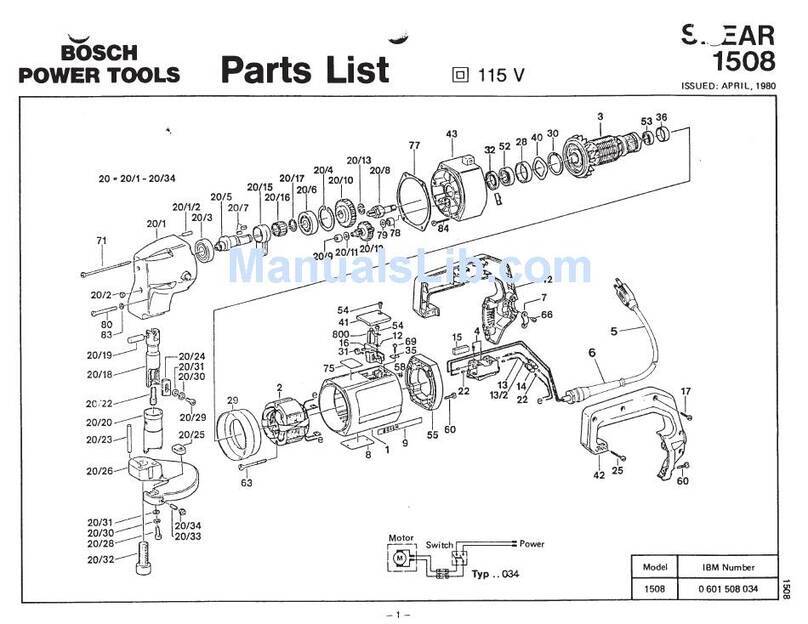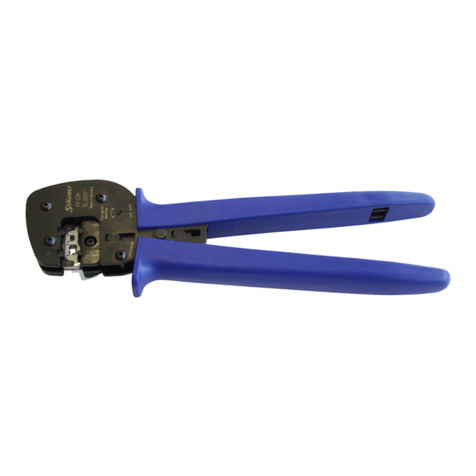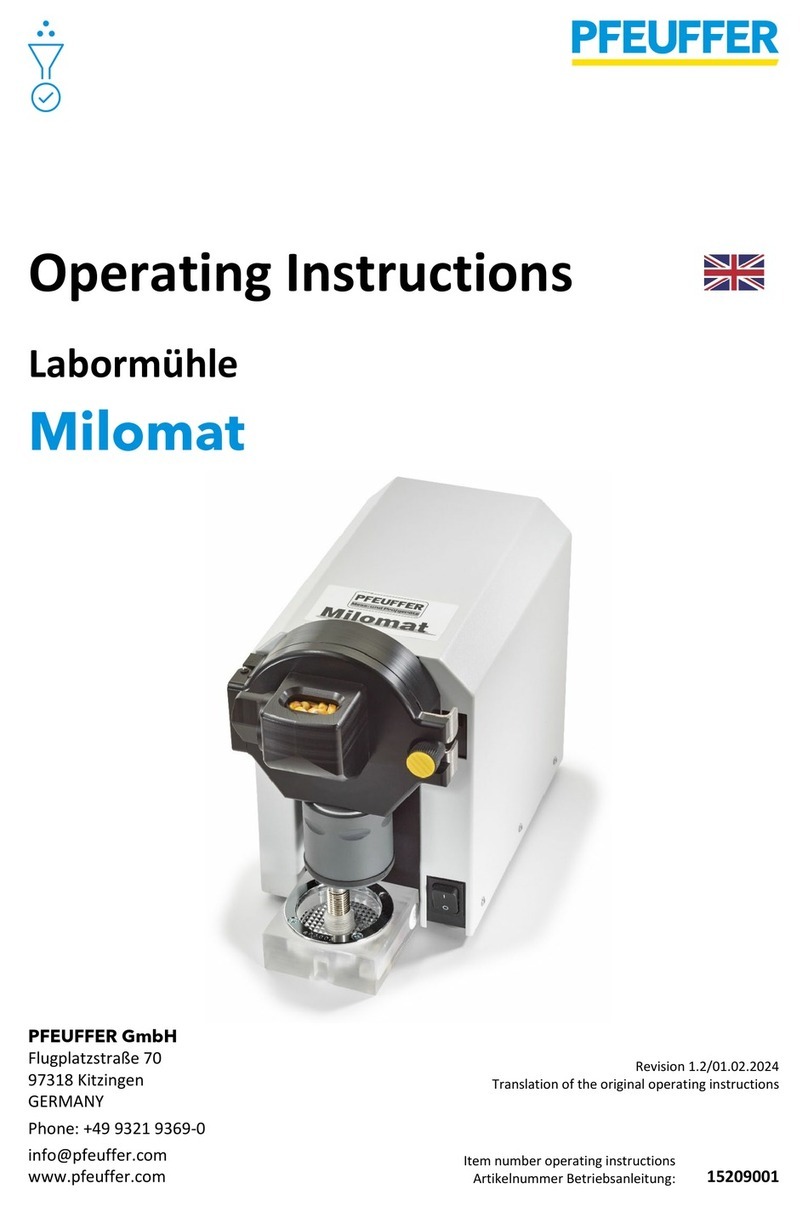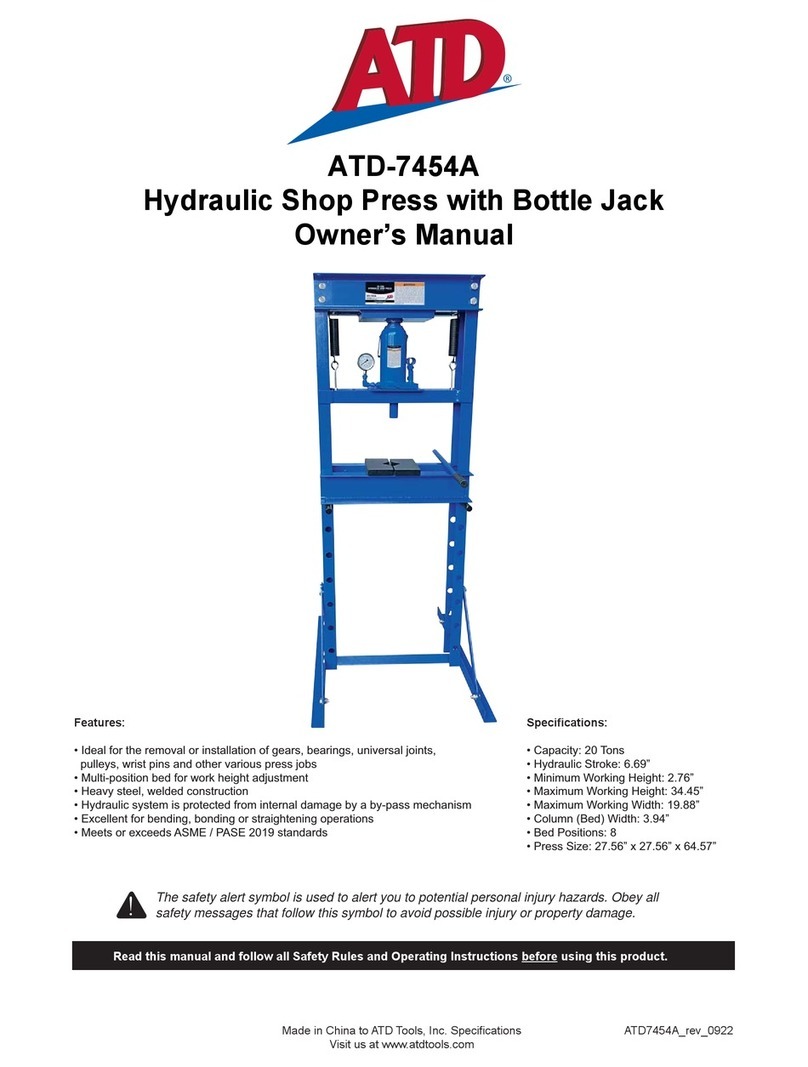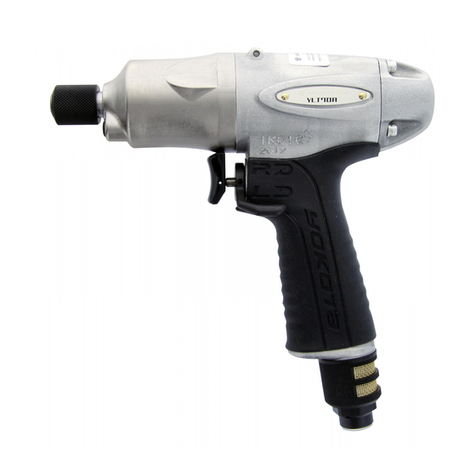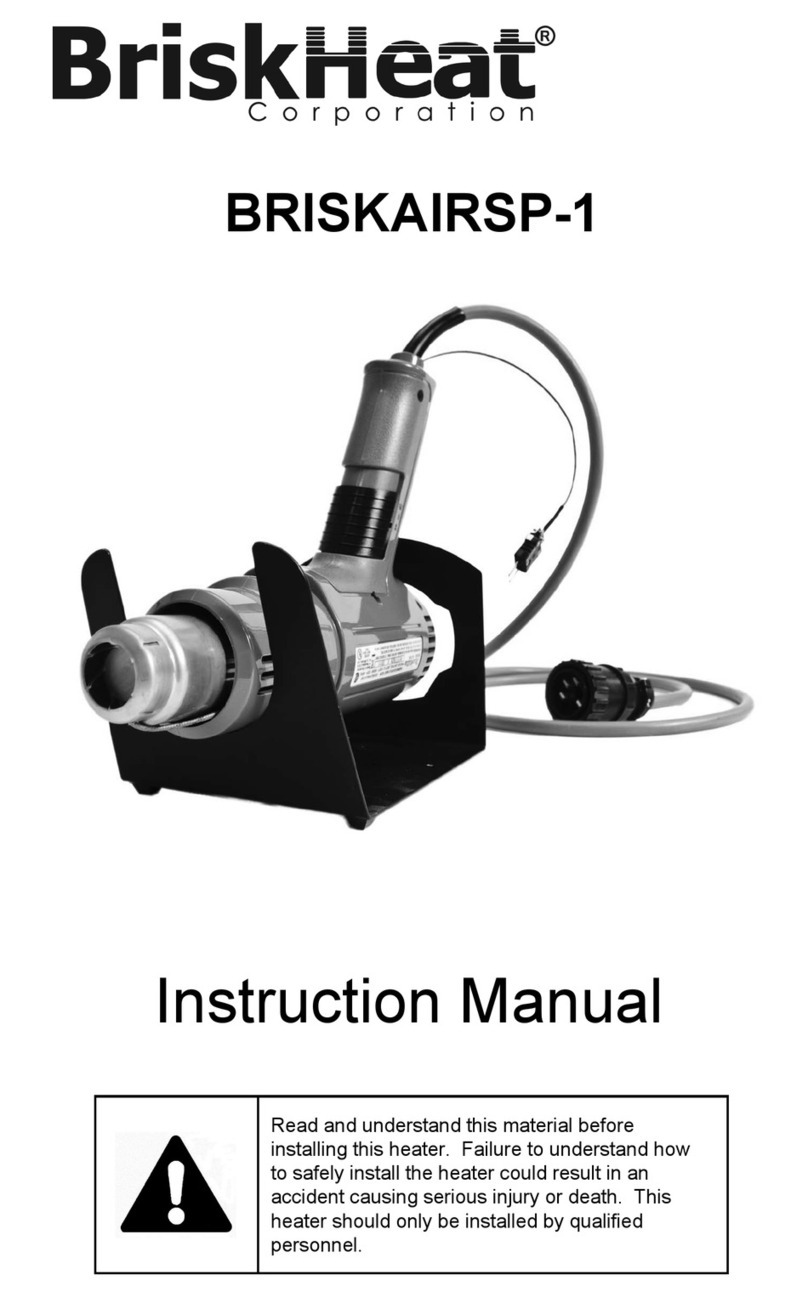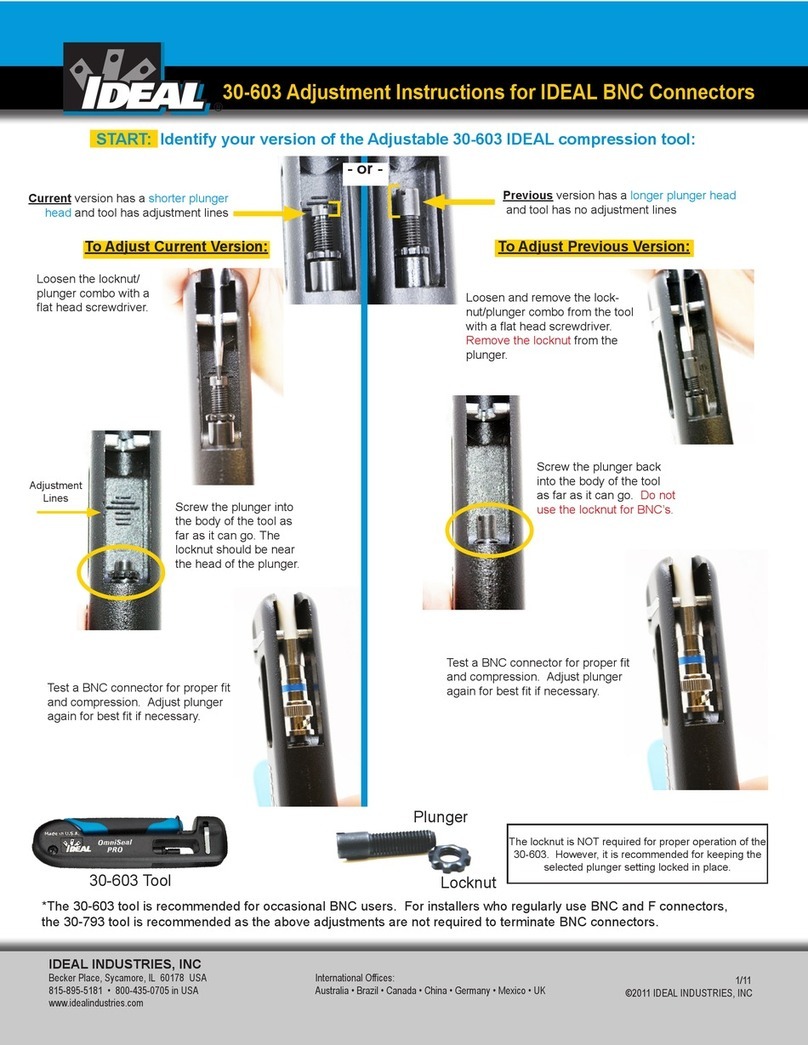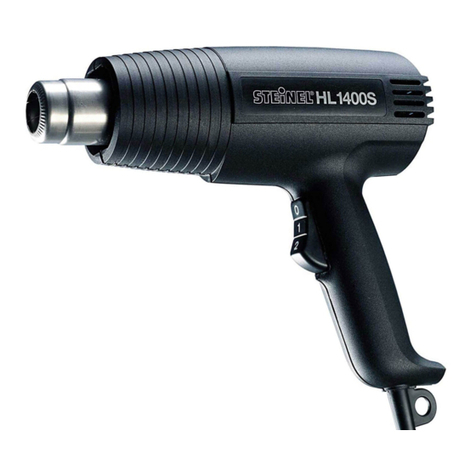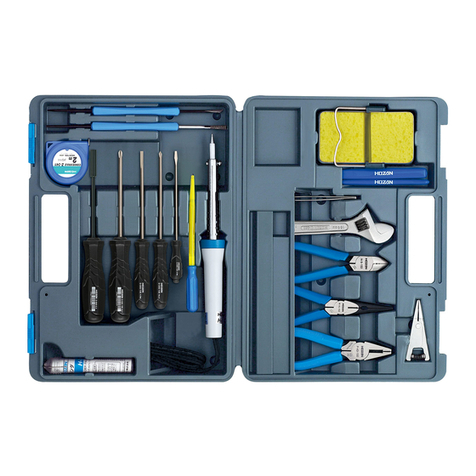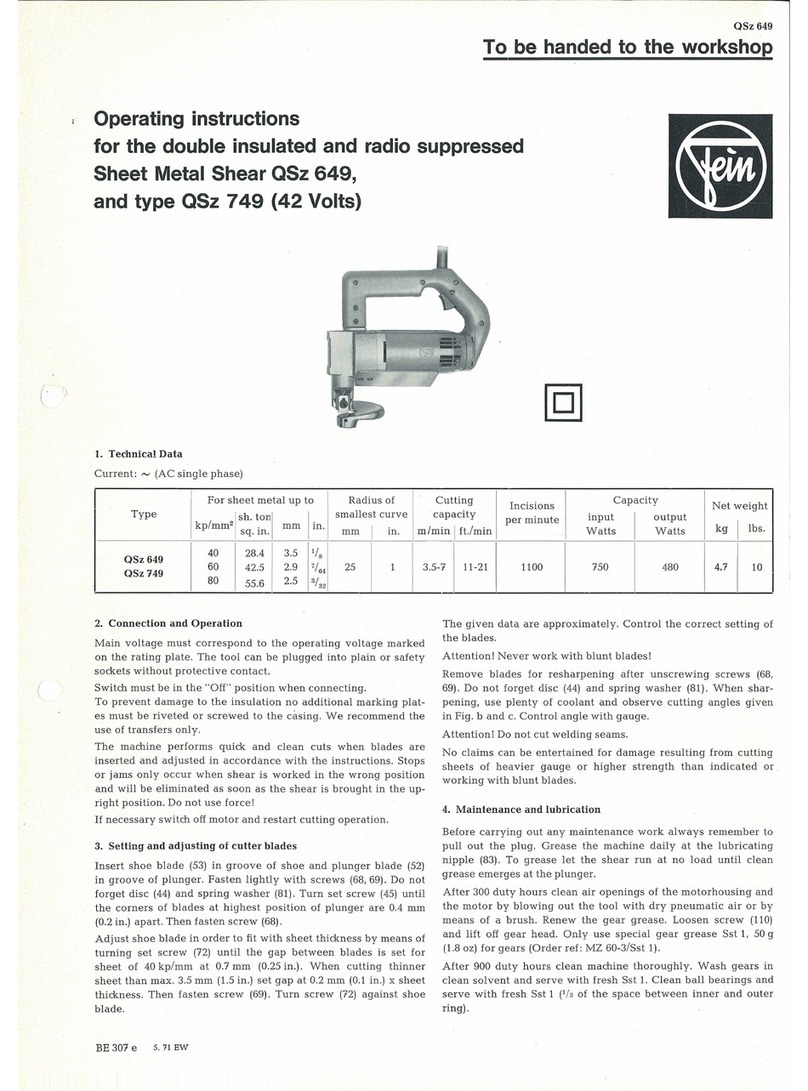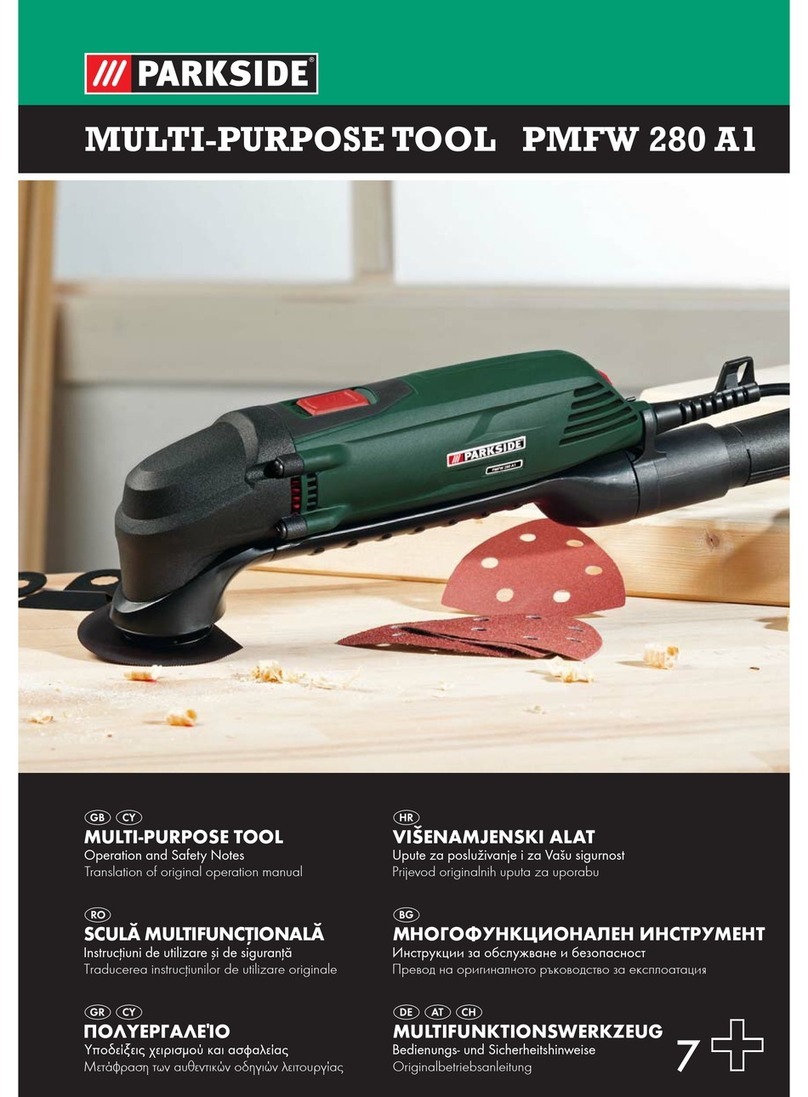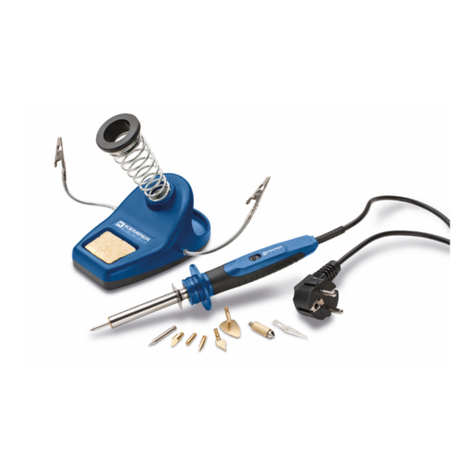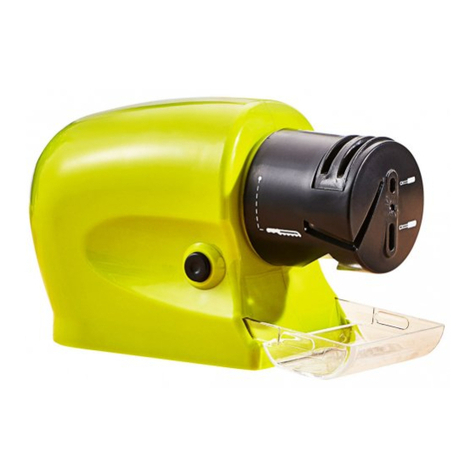Siegmund System 16 User manual

System 16
16002766
System 28
28004643
Table press
EN

Online
Bernd Siegmund GmbH
Landsberger Strasse 180
86507 Oberottmarshausen
Tel. 0049 (0) 8203 / 96 07-0
Fax 0049 (0) 8203 /96 07-33
info@siegmund.com
www.siegmund.com
2

TABLE OF CONTENTS
Table of contents 3
1. About this instructions 4
1.1. Validity 4
1.2. Symbols and markings 4
1.3. Used symbols on the unit 5
2. Safety instructions 6
2.1. Intended usage 6
2.2. Common safety instructions 6
2.3. Secure handling 7
3. Scope of delivery 8
4. Assemby 9
4.1. Structural requirements 11
4.2. Operating 12
4.3. Clamping hydraulic, extending and retracting 14
4.3.1. Extending 14
4.3.2. Retracting 15
5. Trouble shooting 16
5.1. Overload safetys 17
6. Maintenance and inspection 18
6.1. Maintenance 18
6.2. Inspections 19
6.3. Fire protection 19
7. Disposal 20
8. Technical data 21
8.1. Hydraulic diagram 22
8.2. Type plate 23
9. Warranty 23
10. Installation instruction 23
11. Notes 24
EN
3

1. ABOUT THIS INSTRUCTIONS
1.1. VALIDITY
1.2. SYMBOLS AND MARKINGS
The assembly and operating instructions are part of the product clamping hydraulic L12.11V5 and its
versions. (Consecutively referred to as unit.)
For damages and secondary damages caused by inobservance of the assembly and operating instructions,
Bernd Siegmund GmbH (consecutively referred to as manufacturer) will not assume any liabilities and
warranties.
• Please pay attention to the assembly and operating instructions prior to usage of the unit.
• Please read the safety instructions!
• Keep the assembly and safety instructions during the service life of the unit safely.
• Keep the assembly and safety instructions accessible to the operating personnel.
• Pass over the assembly and operating instructions to any subsequent owner of the unit.
• Illustrations, measurements and descriptions in this instruction are noncommittal.
Subject to change without notice.
This assembly and operating instructions are valid for the products shown on the cover page only.
For assembling and operating of appropriate attachments, consider their assembly and operating
instructions accordingly.
Structure of written warnings
SIGNALWORD
Mode and source of the hazard (Physical damage)!
Possible effects (Optional).
→Procedure for damage avoidance.
INSTRUCTION
Instruction text.
• Instruction list.
→ Procedure.
4

Danger Levels in warning notes
Other symbols and markings
WARNING LEVEL CHANCE OF INCIDENCE
CONSEQUENCE BY INOBSERVANCE
DANGER Imminent Danger Death, serious physical damage
COUTION Possible Danger Possible physical damage
ADVICE Possible Danger Material damage
SYMBOL/MARKING MEANING
Requirement
→Action in one step
1.
2. Action with more steps in subsequent order
• Numeration (first level)
..., see capture xxx Page xx Cross Reference
1.3. SYMBOLS USED ON THE UNIT
Warning and order signs according to ASR A1.3 (old/new) / DIN 4844-2 / DIN7010
→ Indication of jamming possibility during operation
Total usage 1 x (see Pic. 1):
• Clamping spot/Lever/Lever Absorption
Caution of Hand Damage
NOTICE
→ Pay attention during usage, that all symbols are completely readable.
→ Possible clamping spots while retracting optional accessories should be marked by
the operator.
5

Pic. 1: Instructions (Pic. Shows Version 28)
Lever
Lever Absorption
Clamping Spot
Clamping
2. SAFETY INSTRUCTIONS
Pay attention to the following instructions to avoid malfunction material
damages and physical damages
2.1. INTENDED USE
2.2. COMMON SAFETY INSTRUCTIONS
The intended use of the unit is the clamping of work pieces with a clamping force of max 25.000 N inside
an external absorption. The unit itself is unable to absorb any radial forces.
• The unit is used in a dry internal area with normal room temperature.
• The unit is not suitable for lifting and bearing loads.
• The unit is not approved for EX protected areas.
• The unit is not approved for the use inside machine tools.
• The unit is designed for central power transmission of the piston rod.
Pressure holding time 30 minutes.
• Protection of work pieces (position/overhead clamping) against dropping out is not allowed inside
a fixture or machine
→ Keep packing material away from children. Danger of choking!
→ Read this assembly and operating instructions carefully prior to initial operation.
→ Secure the proper installation of the unit in the destined application prior to initial operation or
maintenance work.
6

→ Correct handling and paying attention to the assembly and operating instructions are essential for
the productivity reliability and work security.
→ If the unit shows damages or leakings, it shoud be shut down immediately.
→ The maximum intendet clamping force is 25 KN, it must not be exceed. Exceedings can leed to
serious damage on the unit and physical damages.
→ The unit is equipped with a bursting element. While using the unit as alignment as well as while
applying external forces, the bursting element will provide safety to the user.
→ The manufacturer declares liability exclusion for physical and material damage caused by
incorrect use of the unit.
→ Alterations of the original condition of the unit or self-made repairs will result in expiration
of any warranty.
→ Never work below clamped loads, if additional security measures are not provided. Please regard,
woring below clamed loads is always dangerous even if additional security is applied.
→ Do not repair the unit by yourself, repair work should be done by a qualified technician.
2.3. SECURE HANDLING
→ While using the unit, please check that the piston rod is holohedral and centered effecting the used
absorption and that the alignment points are secured. A outcentered stress can lead to damages on
the unit and danger to individuals.
→ While retracting the piston rod, the operator and other persons must stay out of the danger zone.
→ Pay attention to the warning instructions of the manufacturer.
→ The unit should be operated by people trained in the use of the unit only
.
→ Before using the unit, free your hands of all things (Tools, for instance) causing potential injuries.
→ Remove possibly leaking oil immediately. Slip danger.
→ Operate unit with the provided levers, hand lever and lowering lever only.
→ Transport the unit in retracted condition only.
→ Don’t store the unit loosely, store it secure to avoid tilding and falling dawn.
→ The Unit consists partly of moving parts. If not used properly, there may be danger of squeezing.
7

1
CAUTION
Slight risk of injury
• During transportation, don’t carry the unit on the rubber grommt of the lever.
It could loosen and the unit may fall down.
• Wear safety clothes and safety equipment while operating hydraulic units.
• Wear protective gloves and safety shoes while working with the unit.
• Don’t stay directly over the pump handle to avoid being hit from a possible
kickback of the handle. Stay sideways to the pump to keep your body out of the
moving path of the handle.
• Consider the marked clamping spots (Pic. 1).
3. SCOPE OF DELIVERY
Pic. 2: Example scope of delivery Version 28
(Picture shows the unit without customer specification)
Tab. 1: Scope of delivery and description
PART NO. DESCRIPTION QUANTITY
1Clamping hydraulic 1
Optional attachment parts on request
8

NOTICE
Mounting absorptions are not included in the scope of delivery and should be coordinated
individually with the manufacturer.
4. INSTALLATION
The lever is split in two parts for smoother handling (Pic. 3).
Please use the machined area of coverage on the lever to firmly screw it on to the absorption.
Use strong alignments and absorptions according to the emerging forces.
For mounting absorptions, use the mounting positions shown in Picture 4 only.
In case you need other alignment spots, please contact the manufacturer.
M10 standard thread
Spanner flat 13 mm
Spanner flat lever
Pic. 3: Lever assembly
NOTICE
• The unit is designed to apply axial thrust. The unit is not suitable for special applications
with aberrant forces (Cross forces) and o center support and the manufacturer disclaims
any liability.
• Pay attention to clean component parts if you are mounting and dismounting the lever
repeatedly. Unclean threads may result in a higher wear and/or damage on the thread.
• Comply with the accident prevention regulations when mounting the unit.
9

60
85
25
30
25
44 -0,2
44 -0,2
-0,05
28 -0,1
36,5
36,5
50+0,1
100+0,05
146
50+0,05 50 +0,05
146
16
28 H10
H10
22
44 -0,2
30
12
-0,05
16-0,1
M6 x 12 tief (5x)
12
16
24
29
12
M12
SW30
ø32
CAUTION
Danger of physical damage, caused by oil spillage
Danger of physical damage, caused by loosened lever
• Don’t drill additional holes in to the unit to install additional absorptions!
• Wear safety glasses to avoid eye injuries!
• The hand lever is moving. Pay attention when mounting the unit to avoid
squeezing of skin parts.
• Wear safety gloves when mounting the unit to avoid personal injuries
.
• Always pay attention that the lever is screwed down firmly. A loose fitting lever
is increasing the risk of physical damage.
Version 28 Version 16
Front Absorption
Piston rod, wrench size 30 mm
Pic. 4: Illustrations
10

The front absorption on Version 16 and Version 28 is designed rotatable. By turning in any direction,
one can switch between two different alignment positions. The alignment is locking 90° shifted.
Pic. 5: Illustration
4.1. STRUCTURAL REQUIREMENTS
• Prior to installation, make sure that the installation measurements and installation conditions
are matching the components of the unit.
• Mount the unit only to the intended absorptions of the unit (Pic. 4).
• Use sufficient dimensioned clamping bolts.
• The clamping bolts must be fitted with clearance in to the absorptions of the unit.
• Don’t apply additional forces to the unit during the installation.
• Construction dimensions see Pic. 6.
• When designing the complete system, consider the EN 1005-3.
• Require the appropriate installation drawing from the manufacturer prior to installation of
you customized unit.
11

Version 16
1:5 Version 28
1:5
238
16
ø32
pumpen
ca. 75°
ca. 324
ca. 20°
senken
100
~287
256
146
60
2460
Pic. 6: Construction Dimensions
4.2. OPERATING
Operate the unit with the hand grip of the pump lever and with the down lever.
→ While operating the unit, wear safety gloves.
→ Utilize the complete support area and length of the pump lever to avoid ergonomic
unfavorable positions. (Lever coating).
→ Both levers are spring recessed, don’t let them snatch.
pump
about 75°
lower
approx. 20°
approx. 324
12

CAUTION
Obstructions during extending and lowering can lead to squeezing!
→ Prior to operating the operating lever, make sure no obstructions are blocking the
travelling distance.
NOTICE
Pay attention to clean and dry operating elements while operating the unit.
Lower lever
Pump lever
Support area
Pic. 7: Operating
13

ca. 75°
pumpen
ca. 20°
senken
4.3. CLAMPING HYDRAULIC, EXTENDING AND RETRACTING
Pic. 8: Functional area of the pump lever and lowering lever
4.3.1. EXTENDING
1. Push the pump lever in regular working speed up to the stopper in pumping direction.
Max. 75° (Pic. 8)
The piston rod executes a stroke movement. According to the travelled angle area, it will
lead to the max. stroke or proportionate smaller.
The possible pump area is limited by a stopper. Quit pumping on arriving at the stopper.
The pump lever is repressed by spring force in to the initial position. Relieve the lever.
The pumping chamber will be filled anew. The unit is ready for a new stroke movement.
According to the travelled angle area in the back movement the following possible stroke
movement will be up to the maximum stroke, or respectively shorter.
2. Ending the pump movement will result in ending the stroke drive. The position of the piston
rod will not change.
lower
approx. 20°
pump
about 75°
14

3. With reaching the upper stop position, no additional pressure will build up. The force on the
pump lever stays unchanged. The piston rod may move a little over the end position and will
then lower just about 2 mm. This is a normal operating condition.
The unit is in any positon (360°) applicable, utilizing the complete stroke length.
Should an angle or construction part on which you put pressure with the table press bend
more than 4 mm please stop putting on pressure.
NOTICE
Depending on pressure and stroke, the actuating force during pumping will change.
Adapt your working speed to the necessary power and your physical condition.
4.3.2.RETRACTING
When actuating the lowering lever, the unit will retract by spring return without actuation force.
1. Retracting and release of the work piece will be activated by pushing the lowering lever (Pic. 5).
There will be a release valve opened and the oil flows from the pressure chamber back to the
tank room. The unit lowers while the piston rod reverses.
2. When you release the lowering lever and turn the lever back, the lowering movement will stop.
The release of the lowering lever is activated by an integrated spring. The lowering movement
will end immediately, the piston rod stays in its current position.
Retracting is also position independent possible.
CAUTION
Physical damage trough sliding or squeezing danger
• Squeezing danger: While lowering, the piston rod will retract to the stopper.
Your hand and/or parts of your skin may be squeezed in.
max. 4 mm
Pressure
15

CAUTION
Obstructions during extending and lowering can lead to squeezing!
Squeezing danger: During lowering the piston rod will accelerate by applied forces.
High force and high speed can develop.
5. TROUBLESHOOTING
DISTURBANCE CAUSE SOLUTION
Short-term pressure build
up only
Over travel of the overflow Operator tries to create tension with far
extended piston rod.
Max. stroke reached The overflow is over traveled during
pressure build up. This results in an
immediate pressure loss. The piston
rod travels the length of the excess
to the overflow back, about 2 mm.
Pressure will not build up Safety valve is responding Ensure intended use!
Hydraulic unit polluted Keep the lowering valve open and try
pumping several times.
Repeat this procedure several times.
Pumping jerkily with open and closed
lowering valve. Produce strong internal
oil flow to flush pollutants of the valve
seating.
Repeat this procedure several times.
Unit does not hold the
pressure
Drain valve not fully closed Check drain valve if contamination
prevents complete closing.
16

FEHLER URSACHE LÖSUNG
Unit does not keep Pressure Hydraulic system may
be polluted
Pumping jerkily with open and closed
lowering valve. Produce strong internal
oil flow to flush pollutants of the valve
seating.
Repeat this procedure several times.
Temperature fluctuations The unit is a closed system which is
acting to temperature fluctuations
because of its tightness.
While cooling down (overnight, par
example) the clamping pressure may
change. The work piece may loosen!
This is not a default of the unit!
Keep the surrounding temperature
constant.
Piston rod is bucking,
hardly retracting
Attachment parts may be
to heavy
The spring force is strongest at maxi-
mum stroke and declines at reduced
stroke accordingly. Reduce the weight
of the attachments.
Polluted piston rod Clean the piston rod.
Piston rod does not extend Safety valve is responding Maximum clamping pressure reached
No stroke without load Bursting element responding
See chapter 5.1
5.1. SAFETY VERSUS OVERLOAD
The unit is fitted with two systems safeguarding overload caused by excessive hydraulic pressure.
SYSTEM 1
Pressure safety with pressure control valve (DBV)
The pressure control valve secures the unit against excessive pressure, which is applied from the
operator with the hand grip. The DBV opens and prevents an excessive hydraulic pressure inside
the unit.
The DBV is closing automatically responding to relevant lower pressure. The unit stays functional.
17

SYSTEM 2
Pressure safety with bursting element
Bursting elements are pressure protections which secure pressure leading systems against dangerous
excess pressure. It occurs in bursting of a bursting disc, which is consisting of metal foil.
In case of the acting of an external force to the piston rod, by example an additional hydraulic,
an excessive distortion of the work piece, the pressure safety will be destroyed.
The bursting disc is responding to a force of 36000 N axial to the piston rod. The piston rod retracts
according to the effecting load completely and stays functional.
For replacement, please contact your distributor.
CAUTION
Manipulation on the safety valve!
→ The unit is on the side of the piston rod and on the pump piston side secured against
over loading through a safety valve. Manipulation may lead to damages on the unit
and/or physical damages to people.
6. MAINTENANCE AND REVISION
6.1. MAINTENANCE
The unit is basically maintenance free.
CAUTION
When leaking fluids, there is an increased fire hazard and an increased danger
of slipping!
→ Check the unit leak tightness prior to each utilization.
→ By noticing abnormalities, don’t utilize the unit and contact your distributor.
→ Check the unit about damages and defects.
→ Don’t use a damaged product.
→ Check the optical condition of the coating and the existing of the operating elements.
18

DANGER
Pre stressed spring!
Injuries caused by the pre stressed spring unit.
→Never open the unit without appropriate protection!
NOTICE
Damage of the unit trough self-repair!
→ Contact your distributor in case of repair.
→ Order spare parts through you distributor only.
→ Retain a specialist, trained on this unit.
NOTICE
This hydraulic unit is a closed system, there is no additional maintenance
required.
→ The unit doesn’t possess an oil filling screw.
→ The oil level cannot be checked .
NOTICE
→ Because of the aging effect of the seal material, the seals should be replaced
every 6 years.
→ Contact your distributor.
→ Do not open any screw on the unit for checking or refilling oil.
Replacement of the seals
Hydraulic fluids are predominantly inflammable. In case of leaking of the unit and contact of the fluid to
open fire or hot surfaces it can ignite.
Make sure that initial fire can be extinguished with a suitable extinguishing agent.
→ Suitable extinguishing agent: Foam, extinguishing powder, carbon dioxide, sand, water fog
→ Non suitable extinguishing agent (safety reason): Waterjet
6.2. REVISION
6.3. FIRE PROTECTION
19

Disposal of the hydraulic and oil
Packaging material should be conveyed to an environment friendly recycling.
7. DISPOSAL
DANGER
Pre stressed spring!
Injuries caused by the pre stressed spring unit.
→ Open the unit only if appropriate safety measures are applied to the
construction elements.
→ Retract the piston rod to reduce oil pressure and spring tension.
Pre stressed springs
F = 400 N
Pic. 9: Disassembling
→ Wear safety clothing and protection equipment while working with hydraulic devices (safety gloves,
eye protection).
→ Regard the accident prevention regulations while disassemble the unit.
→ The unit consists of different materials which can be homogeneous separated:
• Aluminium
• Steel, galvanized
• Steel, untreated
• Elastomer
• Plastics
• Oil
NOTICE
→ When opening the unit, oil is leaking. Please collect the oil in a suitable container.
→ Recycle used hydraulic oil environment friendly !
→ National regulations about environment protection and work safety are regulating the
disposal of oil and the handling of used oil. Pay attention to those regulations!
20
This manual suits for next models
3
Table of contents
